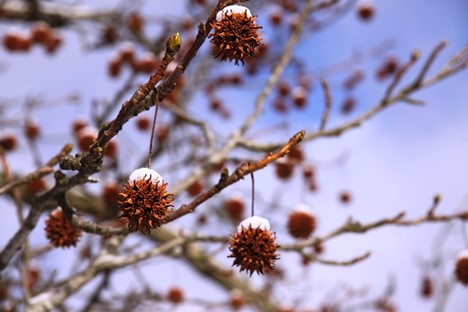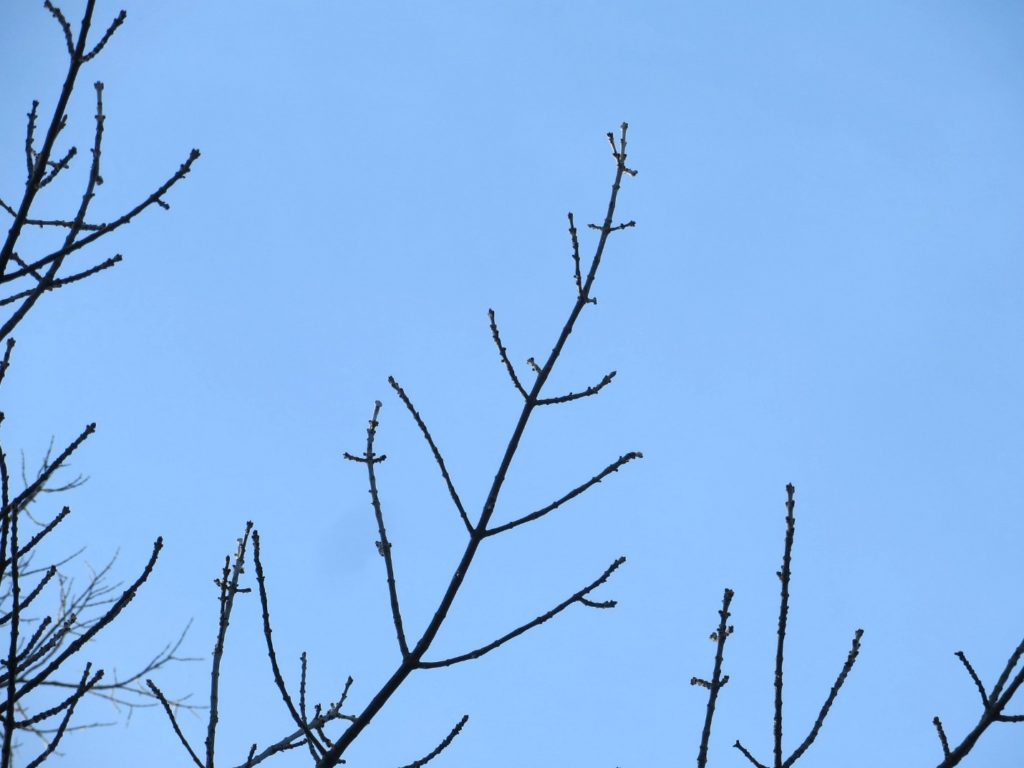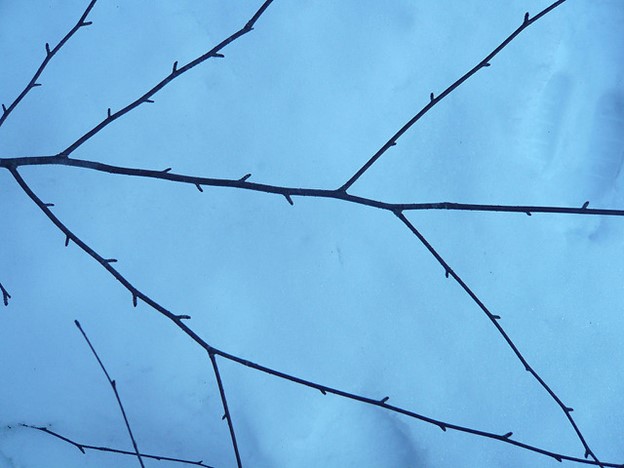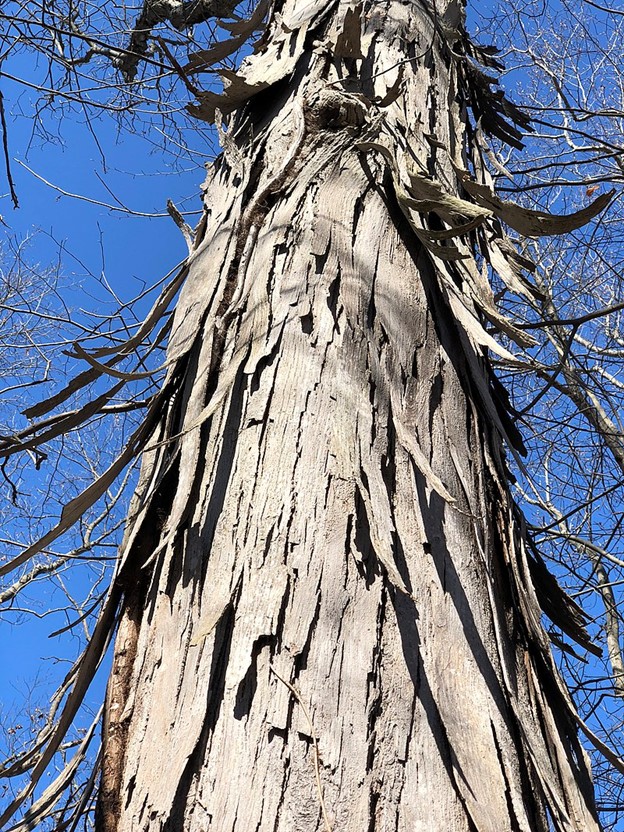
By John Schwartzer
Winter is a wonderful time to get out and identify Pennsylvania’s forest trees but can present some challenges. For instance, one of the easiest ways to tell a red oak from a red maple is leaf shape, but autumn has stolen that “easy button” from would-be tree detectives. Yet plenty of clues exist to narrow down the list of 134 possible native trees to just a few. Subtle clues can help determine the exact species, and a good field guide can be very handy.
Branch Arrangement
There are three main arrangements in which branches grow, opposite, alternate, and whorled. Buds will be arranged the same, as the leaves and branches follow the same pattern. Look at a few branches just to make sure a branch wasn’t lost and healed over when the tree was young. Whorled arrangements are very uncommon.
Opposite Arrangement
This arrangement would appear similar to your arms/shoulders. Two branches will leave the main stem at the same location directly across from each other. Maples, ash, and dogwoods are the only native opposite trees.

Wisconsin Department of Natural Resources
Alternate Arrangement
An alternately arranged tree will have buds and branches with a staggered arrangement. Oak, cherry, hickory, walnut, and blackgum are common examples.

Wisconsin Department of Natural Resources2
Fruit
The fruits of many trees fall to the ground during the summer, but some linger into and even through winter. Fruits are not just things we eat but anything that holds the genetic material for the next generation: nuts (walnut), samaras (maple), drupes (cherry), pomes (apple), and berries (persimmon)… all trees have fruits; the list is long. A dried-up apple hanging on a tree is a good clue that you’re looking at an apple tree. The fruits don’t even have to be on the tree. Walnut husks and shells laying under a tree might show the location of a walnut tree.

2016 The Ohio State University
Bark
Bark can be another big clue as to what tree is found. Smooth, rough, furrowed, streaked, and color are all indicators of a tree’s species.

Shagbark Hickory
Identification of trees can be more challenging in the winter, but with a little practice using the tips above, anyone can become an advanced tree ID sleuth.
A great resource for identifying common trees in PA is the DCNR publication “Common Trees of Pennsylvania” available at http://www.dcnr.state.pa.us/cs/groups/public/documents/document/dcnr_20029752.pdf
Looking for more fun ways to enjoy PA’s state parks and forests? Find more resources and ideas on the Pennsylvania Parks and Forests Foundation’s Recreation Page!
###
About the Pennsylvania Parks and Forests Foundation
The Pennsylvania Parks and Forests Foundation supports 124 state parks and 2.2 million acres of forest by coordinating volunteers, activities, and donations through its 48 chapters. The mission of the foundation is to inspire stewardship of Pennsylvania’s state parks and forests. To learn more about PPFF, visit https://paparksandforests.org/.
Follow us on social media:
Facebook: @PennsylvaniaParksAndForestsFoundation
Twitter: @PaPFF
Instagram: @paparksandforests
LinkedIn: Pennsylvania Parks and Forests Foundation




